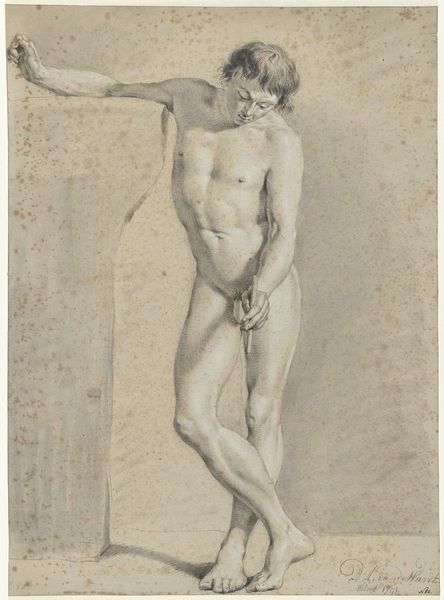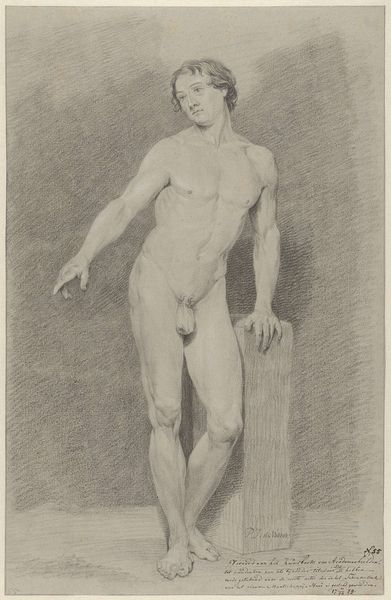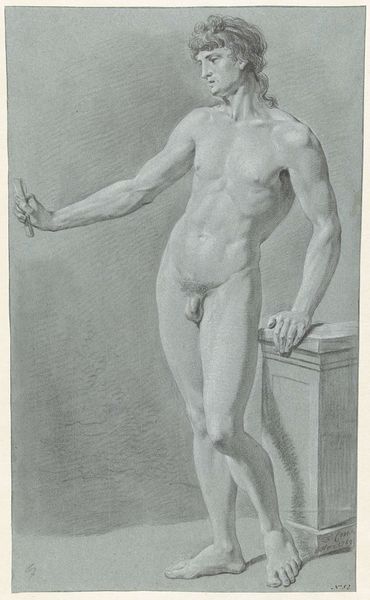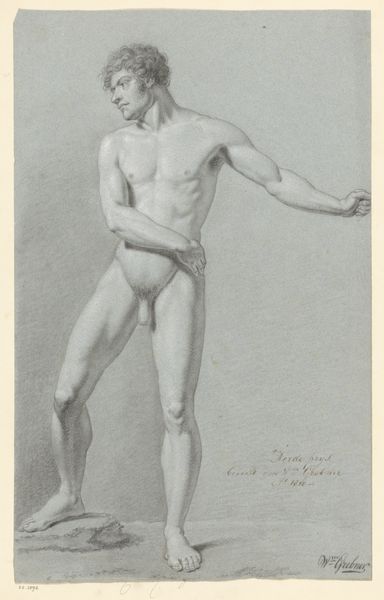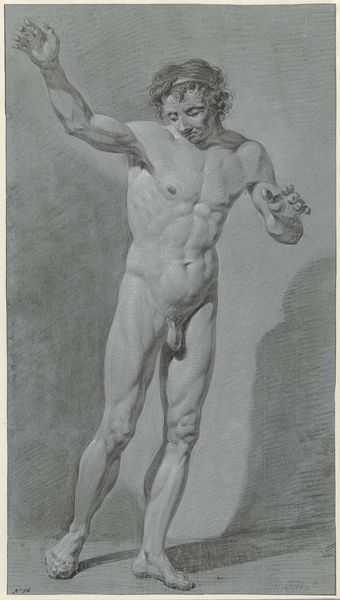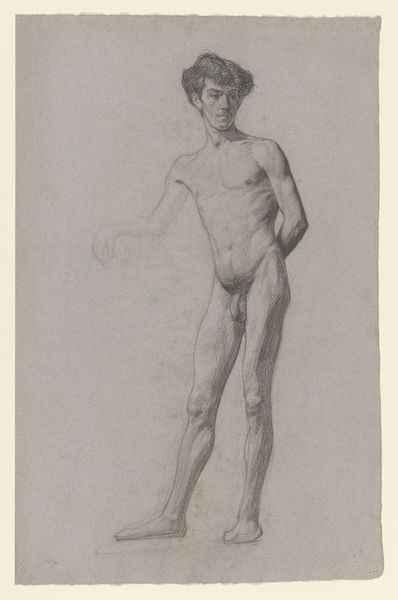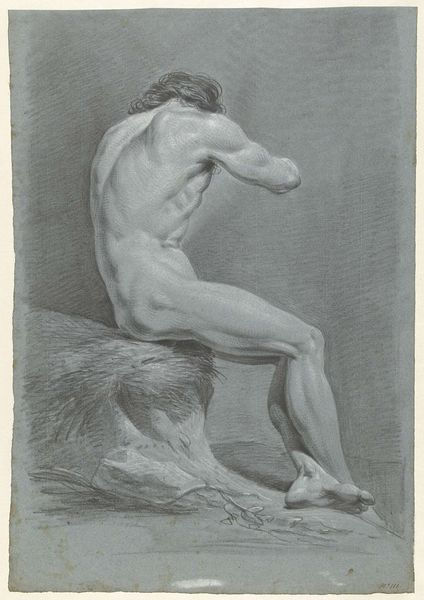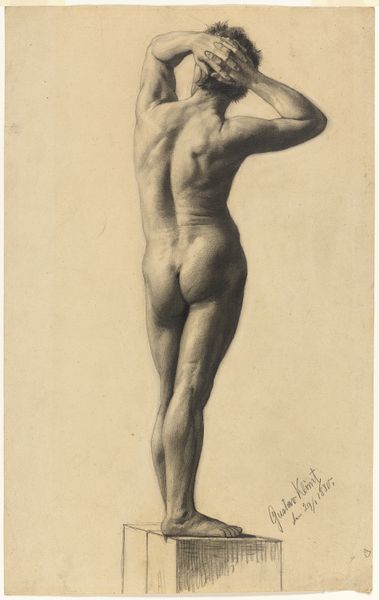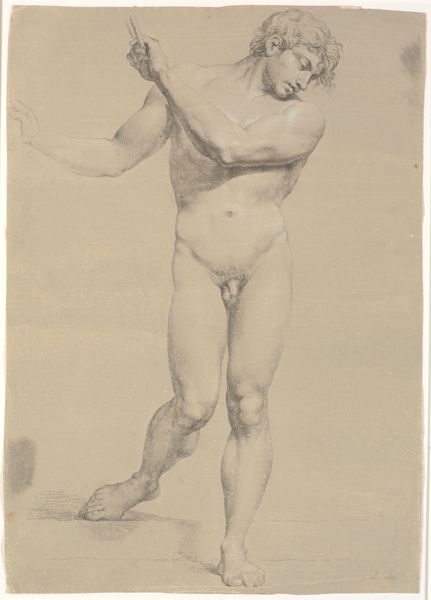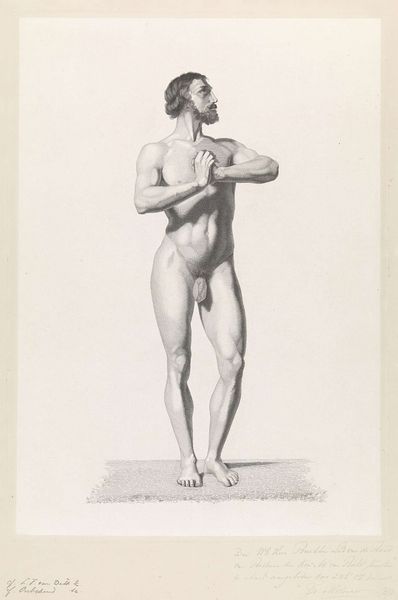
Staand mannelijk naakt, van voren, de linkerarm gestrekt naar links 1812
0:00
0:00
drawing, charcoal
#
drawing
#
charcoal drawing
#
form
#
charcoal
#
academic-art
#
nude
#
realism
Dimensions: height 543 mm, width 427 mm
Copyright: Rijks Museum: Open Domain
Editor: This is "Standing Male Nude, Front View, with Left Arm Extended to the Left," a charcoal drawing by Christiaan Andriessen, created in 1812. It's quite striking in its realism, but the man's expression seems almost…uneasy? How do you interpret this work, especially considering its historical context? Curator: That’s a keen observation about his expression. When I look at a nude like this from 1812, I can't help but consider the power dynamics at play. Who is this man, and for whom is he posing? Think about the legacy of colonialism, slavery, and social hierarchy inherent in that era. This is not just a neutral study of form. Whose gaze is being centered? Editor: So, it's not just about academic study; it's about the politics of representation? Curator: Exactly. Academic art served particular social functions. What bodies were considered worthy of artistic study and preservation reveals a lot about prevailing ideologies. Consider, too, the absence of readily available examples of women in similar standing. What does that silence tell us? Is his pose inviting? Challenging? How does the artist render the model's masculinity? Editor: The extended arm almost feels like a challenge, or an accusation, doesn’t it? It shifts the power dynamic slightly. He doesn't just seem passively observed. Curator: Yes, I agree. Now, think about Andriessen, a white male artist, and his potential blind spots. Whose stories are not being told because of who is in control of the art supplies, so to speak? What responsibility did he have – or not have – in how he presented this man? How does viewing this nude figure through a contemporary lens challenge traditional art historical narratives? Editor: It definitely forces a re-evaluation of the artwork's significance beyond just its formal qualities. I hadn't thought about all of those angles. Curator: Precisely! Seeing art as inherently connected to social justice expands its meaning. This is exactly what an intersectional understanding does to an art historical discussion!
Comments
No comments
Be the first to comment and join the conversation on the ultimate creative platform.
